Posts Tagged ‘new puppy’
New Puppy Checklist: Everything You Need Before Welcoming Your New Furry Friend into Your Life
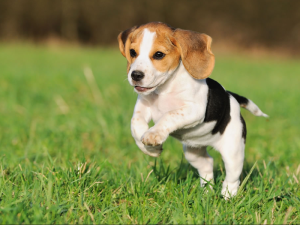 Bringing a new puppy into your home is an exciting time but requires some preparation for your home. Puppies require a lot of attention and care, so this checklist will be beneficial if you are unsure where to start with the basics for your new puppy.
Bringing a new puppy into your home is an exciting time but requires some preparation for your home. Puppies require a lot of attention and care, so this checklist will be beneficial if you are unsure where to start with the basics for your new puppy.
Some companies have created puppy starter kits. For example, this box made by Chewy has a set of toys, treats, and potty-training materials to help you with your new puppy. All top-rated items, new puppy owners are sure to appreciate it. It also makes a great gift. It can be found here.
Beyond toys, treats, and potty-training materials, puppies need food and water bowls. There are a lot of different options, but one that is slightly lifted is easier for your puppy to eat from. If you get one with walls, it is more likely your floor will stay cleaner.
Also necessary is a bed for your pet. An elevated bed is good for keeping your dog lifted and is helpful for teaching different cues. Other more traditional options are great too, especially as your pups are growing quickly.
Some owners choose to crate their puppies, and there are a lot of options but must be replaced as dogs grow. Crates help dogs have a safe place, especially as they adjust to a new space and lifestyle.
Also important for your new puppy is a leash. There are many kinds of leashes, with different uses. It will most likely be trial and error to find what works for you and your puppy, so be prepared for a trial period.
Puppies require hygiene efforts. This includes toothbrushes, toothpaste, nail clippers, brushes, and bathing supplies. Providing exposure to these items while young makes it less scary for adult dogs and easier for their owners.
Lastly, a collar is a great way to express your and your pet’s personality. Be prepared for your new pup with a collar and tag to provide some protection and peace of mind.
The last step for a new puppy is establishing an appointment with your veterinarian to get started on vaccinations and discuss your new dog’s life! Feel free to contact Dr. Olsen of Olsen Veterinary Clinic at 618-656-5868 to set up an appointment or discuss any questions!
2022 Pet Gift Guide
 Don’t leave your pet out of the holiday fun! Furry friends like to open gifts too! Here are a few options to show your four-legged pal some love.
Don’t leave your pet out of the holiday fun! Furry friends like to open gifts too! Here are a few options to show your four-legged pal some love.
The Pupsicle is a great opportunity to give your dog a new treat experience. You freeze your dog’s favorite food in the mold, then when it is time for a treat, you put the frozen treat in the Pupsicle. When they’re done, you’re able to open the ball, wash it, and repeat! Find it here.
You can liven up your cat’s drinking experience with a cat fountain. Some cats enjoy moving water more than still, and a plastic cat fountain such as this one here circulates water for cats to drink.
Say you want to get a gift for your favorite pet owner in your life. The company West and Willow makes custom pet portraits that any pet owner will be sure to love. You can find them linked here.
Social media has allowed several pets to become Tik Tok famous. Pets have been trained to use buttons programmed with specific words to communicate with their owners. You can find a starter kit here to try your pet’s hand at internet fame.
For cats that love to play but whose owners don’t love obnoxiously bright-colored toys laying around the house, these handmade cat toys from an Etsy seller are stylish and aesthetically pleasing. They are environmentally friendly as well, made from leftover upholstery fabric. These toys are filled with grounds of a plant called silvervine which is like catnip. If your cat doesn’t really like regular catnip, silvervine is a great alternative. Find these toys here.
Whether you are looking for a gift for your furry friend or a close pet-lover, these gifts are sure to please all. Feel free to contact Dr. Olsen at Olsen Veterinary Clinic at 618-656-5868 with any questions!
Dr. Olsen’s Breed Spotlight: The Tibetan Mastiff

Tibetan Mastiff
The Tibetan Mastiff is a large-size Tibetan dog breed. It has a medium to long double coat and is found in many colors. These can be solid black, black and tan, various shades of red (from pale gold to deep red), and bluish gray. Sometimes, they can have white markings around their neck, chest, and legs.
The term mastiff goes back to when the Europeans first went to Tibet. They used the term to refer to nearly all large dog breeds in the West. Early Western visitors misnamed several of its breeds through this process. For example, the Tibetan terrier is not a terrier, and the Tibetan spaniel is not a spaniel.
In the early 20th century, the Prince of Wales, George, introduced a pair of Tibetan Mastiffs to the United Kingdom, which caused the breed to become prevalent enough in England to be shown at the Crystal Palace show in 1906. Since 1980, the breed has been gaining in popularity worldwide.
The Tibetan Mastiff is a primitive breed and retains the general hardiness that would be required of them to survive in the harsh environment of Tibet, Ladakh, and other high-altitude Himalayan regions. Because of this, they tend to have strong instinctive behavior, including canine pack behaviors. These help the breed survive in harsh environments. It has maintained many of the same biological processes as wolfs and other animals.
The dog has a long, double coat whose length depends ultimately on the climate. Uniquely, the Tibetan Mastiff lacks the unpleasant big-dog smell that affects many other large dog breeds. Their coat can shed dirt and odors on its own. Many of the dogs shed somewhat throughout the year, but there is generally one great molt in late Winter or early Spring.
Tibetan Mastiffs have a life expectancy of around 10-16 years, but this span can vary. Generally, the breed has fewer genetic health problems than many other breeds. However, cases can be found of hypothyroidism, entropion, ectropion, distichiasis, skin problems, etc. As with most large breeds, some will suffer from elbow or hip dysplasia.
Hypothyroidism is common in Tibetan Mastiffs, along with many other large “northern” breeds. They should be tested periodically throughout their lives using a complete thyroid panel. However, because the standard thyroid levels were established using domestic dog breeds, test results must be considered in the context of what is “normal” for the breed, not what is standard for all breeds. Many Tibetan Mastiffs will have “low” thyroid values, but no clinical symptoms. Vets and owners differ on the relative merits of medicating dogs that test “low” but are completely asymptomatic.
The Tibetan Mastiff is sure to be a large lovable friend for any owner. Feel free to contact Dr. Olsen at Olsen Veterinary Clinic with any questions at 618-656-5868.
Tips and Tricks For Grooming Your Pet
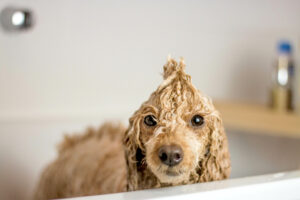
Part of taking care of your pet is regular grooming efforts to keep their coat healthy and your pet comfortable. These tips will help you stay on top of their grooming and keep your pet happy and healthy.
First, be sure to regularly brush your pet’s coat to prevent matting. Especially with long-haired animals. Your pet needs regular brushing regardless of the breed to keep its coat shiny and healthy. The amount of brushing depends on coat length and texture. Longhaired breeds will need more frequent brushing of at least once a week if not every other day. Short-haired breeds like greyhounds or Labradors may need a good brushing only every other week. Matting can cause pain for your pet. This will lead to licking or biting, causing skin irritation which can then lead to skin infections. Be sure to brush your pet regularly to keep their coat healthy.
Second, many pet owners choose to have a groomer take care of their pet’s hair care. That said, if you proceed carefully, you can trim overgrown hair around your pet’s eyes or pays in between professional grooming appointments. Trimming the hair around your pet’s eyes can prevent overgrown hair from blocking its vision and rubbing against and damaging its eyes. When trimming, make sure your pet is calm and lying down, preferably. Move slowly and calmly and use extra caution with scissors. Make sure to reward their calmness with a treat after they are finished.
Third, trimming your pet’s nails will keep them from experiencing discomfort from overly long nails. There are many different tools to do so, and you may have some trial and error until you find what works best. There are plenty of resources found online for guidance on your specific pet and how to trim its nails.
When grooming your pet, be sure to check their ears for ear infections. Ear infections can be painful, so if you notice any inflammation, odd smells, shaking or scratching, discharge, or pain upon touch. If you notice any of these signs during your regular grooming, take your pet to the vet for a checkup.
Grooming your pet is part of their regular care of them such as feeding them and providing them with exercise. With these tips, you can be more prepared for helping your pet take care of itself. Of course, with any questions, feel free to contact Dr. Olsen at Olsen Veterinary Clinic at 618-656-5868.
Is This Plant Toxic to Dogs? Complete List of Plants Your Dog Should Avoid
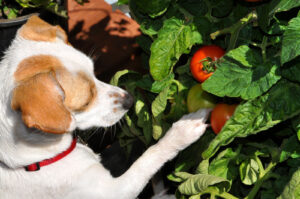 There are plenty of risks to your dog daily. Whether it be cars, other dogs, or something as simple as a plant, it is vital to know the risks that can affect your dog.
There are plenty of risks to your dog daily. Whether it be cars, other dogs, or something as simple as a plant, it is vital to know the risks that can affect your dog.
The most common poisonous plant to dogs is the Sago Palm. This plant is very popular in warmer climates. Every part of this plant is toxic to dogs. This plant is extra dangerous because some dogs find them very delicious and are very attracted to them. The serious side effects of this plant include liver failure and death in some cases.
Another common plant that is toxic to dogs is the tomato plant. When dogs consume this, it can cause weakness, gastrointestinal problems, dilated pupils, slow heart rate, drowsiness, and confusion. Make sure your dog steers clear of this plant to avoid any unnecessary vet visits.
Aloe vera is another summertime plant that is toxic to dogs. The saponins in this succulent can cause vomiting, diarrhea, lethargy, tremors, and general nervous system depression.
Ivy is also quite toxic to dogs, having the capability of causing diarrhea, vomiting, excessive salivation and drooling, and abdominal pain.
The amaryllis bulb is a popular garden ornamental but is poisonous to dogs. Be sure to pay attention to the bulbs if you grow them inside. Similarly, the gladiola flower can cause drooling, vomiting, diarrhea, and lethargy when consumed.
The holly shrub is a low toxicity plant, but your dog could still experience vomiting and diarrhea if eaten.
The daffodil, commonly found in the spring, can cause intestinal spasms, low blood pressure, salivation, tremors, vomiting, diarrhea, and even cardiac arrhythmia if eaten by your dog.
Common in every flower arrangement is the baby’s breath flower. When eaten, this small flower can cause vomiting and diarrhea.
Used to attract butterflies, milkweed is very common and pleasant to look at. However, this flower will induce vomiting and diarrhea, difficulty breathing, rapid and weak pulse, dilated pupils, and even more serious issues such as kidney or liver failure and death.
Common in parks and other large-scale landscaping, the castor bean can cause drooling, vomiting, diarrhea, extreme thirst, loss of appetite, and abdominal pain. It is potentially fatal in severe cases which may present as muscle twitching, tremors, seizures, and even coma.
The azalea or rhododendron flower is poisonous to dogs and produces serious gastrointestinal issues. Additionally, it can cause weakness, discoordination, and weak heart rate. This flower has the potential to be fatal.
Next, the tulip is very popular for gardens but can cause gastrointestinal issues as well as central nervous system depression and even convulsions and death.
Similarly, the chrysanthemum flower can cause vomiting, diarrhea, skin rash, and drooling for your dog if they consume it.
Lastly, the begonia is an extremely common garden flower that is toxic to your dog. It can cause extreme oral irritation and excessive inflammation of the mouth and drooling and vomiting.
Summertime is the time to be outdoors, but that means an increased risk for your pet to accidentally consume something poisonous to them. Be sure to keep an eye on your dog and monitor what they try to eat. If you have any questions or concerns about your pet has, or may have, eaten, contact us today!
Tips For Socializing Your Dog
 Socializing your dog teaches them how to react to the world around them healthily without any unnecessary fear or aggression. It is important to start socialization early, so it becomes their normal behavior. Ideally, it should be between three and 12 weeks of age, but not everyone is with their furry friend at that point in their life. Beyond 18 weeks, socialization gets a lot harder, but it is not impossible.
Socializing your dog teaches them how to react to the world around them healthily without any unnecessary fear or aggression. It is important to start socialization early, so it becomes their normal behavior. Ideally, it should be between three and 12 weeks of age, but not everyone is with their furry friend at that point in their life. Beyond 18 weeks, socialization gets a lot harder, but it is not impossible.
An important first step is to take your dog out on daily walks in public. This allows your dog to be exposed to many different experiences such as cars, other dogs, and strangers. The world becomes less scary after a few trips outside. Keep them on a short leash and take your dog on different routes to expose them to new sights and smells. Typically, new puppies should be exposed to different places, bodies of water, woods, beaches, and common neighborhood objects like street signs, bikes, strollers, skateboards, and benches.
Related, expose your dog to a wide variety of people such as men, women, and children so that they can get acclimated to the idea of people other than its owners. If your dog isn’t exposed to people other than its owners, it could become wary of anyone who isn’t their owner, so it is crucial to diversify whom your dog interacts with. Included in socialization is allowing your dog to meet unfamiliar people in unfamiliar clothes like hoods, jackets, sunglasses, and hats.
If your dog acts scared, stay calm and confident. Don’t push them, but don’t make a big deal out of their scared behavior. Use treats to give your dog a positive association with new people and experiences.
Socializing your dog allows them to enjoy the world around them and new experiences. To help your dog not fear new surroundings and people, start early, and show them all that your area has to offer! If you have any questions, feel free to contact Dr. Olsen at Olsen Veterinary Clinic at 618-656-5868.
Seatbelts For Dogs – What You Need To Know
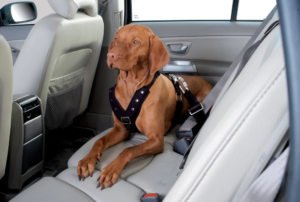 When you get into the car, you think about bucking yourself up. Your dog is most likely not getting their own seatbelt. In fact, 84 percent of pet owners don’t restrain their dogs on car trips according to a survey done by AAA. Even if you think you have the calmest dog in the world, your dog does need a seat belt. It helps keep them and the driver safe.
When you get into the car, you think about bucking yourself up. Your dog is most likely not getting their own seatbelt. In fact, 84 percent of pet owners don’t restrain their dogs on car trips according to a survey done by AAA. Even if you think you have the calmest dog in the world, your dog does need a seat belt. It helps keep them and the driver safe.
When dogs are restrained or contained in the car, they can’t distract the driver as much. According to the CDC, nine people are killed and 1,000 more injured because they were distracted while driving every day. While cell phones are the biggest distracter, your pet can be a major attention grabber too. Roughly two out of three dog owners admit to being distracted by their pup in the car. If you are in an accident, a dog without a seatbelt can turn into a deadly projectile. A ten-pound dog exerts 500 pounds of force during a 50-mph collision while a 60-pound dog becomes a 2,700-pound projectile at 35-mph. Overall, a dog without a seatbelt can cause serious damage in an accident.
Some states require pet restraint laws. So far, only three have laws that require your dog to buckle up in the car, Rhode Island, Hawaii, and New Jersey. Others forbid pets from riding in the back of pick-up trucks or on a driver’s lap. While Illinois does not have any specific pet restraint laws, you can still get a ticket for distracted driving if you get pulled over and your dog is not restrained. The safest place for dogs is in a carrier or harness in the back seat. Just as an airbag can damage a child, the same is for your pet. To get your pet used to a harness, start slowly with five-minute trips, and then expand to ten- and 15-minute rides. Eventually your dog will get used to it. During the outing, be sure to give your dog plenty of praise and a treat after the run.
When you get into the car, you think about bucking yourself up. Your dog is most likely not getting their own seatbelt. In fact, 84 percent of pet owners don’t restrain their dogs on car trips according to a survey done by AAA. Even if you think you have the calmest dog in the world, your dog does need a seat belt. It helps keep them and the driver safe. When dogs are restrained or contained in the car, they can’t distract the driver as much. According to the CDC, nine people are killed and 1,000 more injured because they were distracted while driving every day. While cell phones are the biggest distracter, your pet can be a major attention grabber too. Roughly two out of three dog owners admit to being distracted by their pup in the car.
If you are in an accident, a dog without a seatbelt can turn into a deadly projectile. A ten-pound dog exerts 500 pounds of force during a 50-mph collision while a 60-pound dog becomes a 2,700-pound projectile at 35-mph. Overall, a dog without a seatbelt can cause serious damage in an accident.
Some states require pet restraint laws. So far, only three have laws that require your dog to buckle up in the car, Rhode Island, Hawaii, and New Jersey. Others forbid pets from riding in the back of pick-up trucks or on a driver’s lap. While Illinois does not have any specific pet restraint laws, you can still get a ticket for distracted driving if you get pulled over and your dog is not restrained.
The safest place for dogs is in a carrier or harness in the back seat. Just as an airbag can damage a child, the same is for your pet. To get your pet used to a harness, start slowly with five-minute trips, and then expand to ten- and 15-minute rides. Eventually your dog will get used to it. During the outing, be sure to give your dog plenty of praise and a treat after the run.
It may be tempting to have your dog ride shotgun with you, but for their safety and yours, keep them buckled up in the back. With any questions, feel free to contact Dr. Olsen at Olsen Veterinary Clinic at 618-656-5868!
Holiday Pet Gift Guide – 2021
 The holidays are a time for giving, and you can’t forget about your pets or a pet-lover in your life. I’ve assembled a list of the best pet gifts around to show your furry loved ones you care and help them participate in the holiday spirit.
The holidays are a time for giving, and you can’t forget about your pets or a pet-lover in your life. I’ve assembled a list of the best pet gifts around to show your furry loved ones you care and help them participate in the holiday spirit.
The easiest gift is that of more toys for your pet. You can get new toys you think they would like or replace the favorites that always seem to go missing. Here are some cute toy options that your pet would love. Here is a cute Christmas pickle dog toy. Here is a winter rope dog toy. Here is a cute snowman cat toy. Here is a catnip-based reindeer cat toy.
More practical, you could get new essentials like water or food bowls or new leashes. Items like these are always welcome since they get used daily by pets. Here is a nice modern option that is useful and still looks nice in your home. Here is the link.
For a more unique gift, you could get a pet DNA kit to see what their history is as an animal. For some kits, you can learn about their preferences as an individual animal. An example cat DNA test is linked here. Here is a dog DNA test. Here is a pet food and environmental intolerance test to see what bothers your pet.
You could also get your pet a nice jacket to keep them extra warm in the cold winter months. An example one for your dog is linked here. Maybe you’d like a more fun outfit to wear on the special holiday. An example is linked here.
Perhaps your dog likes to stick their head out the window. Some protective goggles for their eyes can be found linked here.
For the pet-lover in your life, you could get them a personalized pin for them to display their furry friend with pride. A handmade pin can be found linked here.
Maybe you are looking to splurge on your pet this winter. If your pet wants to go outside and is not allowed, or maybe they are getting old and can’t move as much as they used to but still wants to enjoy the outdoors, they could use a stroller like this one linked here to enjoy nature. Another splurge item could be this activity monitoring pet tracker. It’ll allow you to stay on top of your pet’s health.
Sharing the season of giving with your pets will only make it more enjoyable. If you have any questions, feel free to contact Dr. Olsen at 618-656-5868 or send him an email here!
What to Do Before Adopting a New Pet
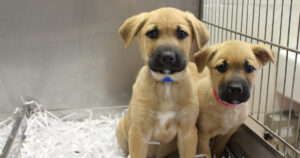 Adopting a pet is an exciting time for you and your family. However, it can be very overwhelming before your new furry friend comes home. Today, we will be discussing what you should do before your new pet comes to their forever home.
Adopting a pet is an exciting time for you and your family. However, it can be very overwhelming before your new furry friend comes home. Today, we will be discussing what you should do before your new pet comes to their forever home.
First, you should consider your current family. Do you have any other pets? How will they react to bringing in a new pet into the home? You also need to consider how your current home will serve for your new pet. Will your social life or work obligations affect your ability to care for this new pet? How do the other people you live with feel about having a new pet in the house? Are there any health issues that need to be accommodated? What kind of lifestyle do you want to live with your new pet? Are you looking for a dog to go running with or a cat to chill with? Are you in the position to train a pet with behavior issues or are you looking for a more relaxed pet experience? All these questions serve as a guide as to what kind, if any, pet you should adopt. If your current life is not suitable for a pet, maybe it’d be best to wait some time to where you will be more prepared to give your new pet the life they deserve.
More likely than not, the adopting agency will charge a fee to help mediate the costs of taking in unwanted or lost animals. This adoption fee will be a tiny fraction of money compared to how much money you will be spending over the life of your pet. You may also need to pay for your pet to be spayed or neutered before bringing them home. Some mandatory expenses of caring for a pet include food, veterinary care, licensing, collars/leashes/ID tags, cat litter, and grooming supplies. Other expenses that are highly recommended but not mandatory are permanent identification in the form of microchipping, training classes, professional grooming, spare supplies, beds, toys, crates, or carriers. There is also the chance that your furry friend will need emergency veterinary care which can get quite pricy. Before adopting a pet, it is important to make sure that you have the right financial state to be able to care and provide for your pet.
Before bringing your new pet home, you need to make sure that you will have the time to spend on taking care of your pet. Pets need to be fed two to three times a day. A pet parent should spend at least one hour per day giving direct attention to your pet in the form of training, exercising, grooming, or playing with them. A pet with a lot of energy will need more time to exercise and play with toys. Pets with long coats will need twenty minutes per day of grooming to keep their coat silky and not matted. Pets with medical conditions will also need extra attention. In the beginning of your adopted pet being home, they may need additional bonding and reassurance time in the first few weeks.
If you are completely prepared to give your pet the best life possible, the last thing you will need to supply are the necessary items for pet care. For dogs, these are food and water bowls, food, collars, leashes, ID tags, a bed, shampoo, nail clippers, brush/comb, poop baggies, toys, treats, and first aid supplies. For cats, they will need food and water bowls, food, kitty litter, collars, ID tag, carrier, nail clippers, brush/comb, toys, and first aid supplies. It could be best, however, to wait to see the size of your new pet for some of these items, as they will vary based on how big or small your new friend is.
Adopting a pet is an enjoyable yet stressful time in one’s life. Hopefully this list of preparation has made you feel more relaxed and prepared to bring your furry friend home. As always, feel free to contact Dr. Olsen at Olsen Veterinary Clinic at 618-656-5868 with any questions.
Dr. Olsen’s Breed Spotlight: The Irish Wolfhound
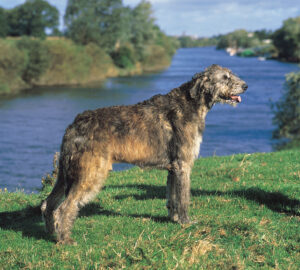 For this next breed spotlight, I will be introducing you to the Irish wolfhound, likely for the first time. This dog is calm, dignified, and the tallest breed of dog (sorry Great Danes). Early ancestors of Irish wolfhounds were fearless, big-game hunters who could dispatch a wolf in single combat. Today, they are the most serene and agreeable of companions.
For this next breed spotlight, I will be introducing you to the Irish wolfhound, likely for the first time. This dog is calm, dignified, and the tallest breed of dog (sorry Great Danes). Early ancestors of Irish wolfhounds were fearless, big-game hunters who could dispatch a wolf in single combat. Today, they are the most serene and agreeable of companions.
The amiable Irish Wolfhound is an immense and muscular hound. They are built along classic Greyhound lines, capable of great speeds at a gallop. A male might stand nearly three feet at the shoulder and can weigh up to 180 pounds. Females will run smaller but are still a very large dog. They have a rough and hard coat that can come in many colors. They can be white, gray, brindle, red, black, and fawn. Irish wolfhounds are way too serene to be fierce guard dogs, but the mere sight of the size of these dogs are enough to deter intruders. Irish wolfhounds are characteristically patient with kids, but their size does require supervision when they are around small children.
The history of this wolfhound goes back to the breeding of indigenous large dogs of Britain to the Middle Eastern coursing hounds that were bartered around the known world in the earliest days of international trade. By the time the Roman Empire had gained a toehold in the British Isles, the giant hounds of Ireland were already long established. In the year 391, the Roman consul received a gift of seven of these hounds that “all Rome viewed with wonder”. These majestic hunters, whose motto was “gentle when stroked, fierce when provoked”, were used on such quarry as the now-extinct Irish elk, a massive, ferocious beast said to stand six feet at the shoulder. In 15th-century Ireland, wolves were overrunning the countryside. The Irish hounds, already renowned big-game hunters, began to specialize on wolves. By the late 1700s, when wolves and other big-game animals of Ireland were hunted to extinctions, Irish wolfhounds lost their job and nearly went extinct themselves. This is a case of a breed doing its job too well for its own good. In 1862, British army captain George Augustus Graham began scouring the country for remaining specimens of Ireland’s national hound. Graham made it his life’s work to protect, standardize, and promote the breed. Today, his name is still spoken with reverence wherever Irish wolfhound fanciers gather.
The coats of Irish wolfhounds have two layers; the outer being harsh and wiry with the under being very soft. They shed throughout the year, but not in an excessive amount. Unlike many other double-coated breeds, Irish wolfhounds don’t “blow out” their coats during an annual or semi-annual shedding season. Irish wolfhounds retain a strong instinct to hunt and chase prey, so they should only be allowed off the leash in areas that are securely fenced. As adults, Irish wolfhounds can become couch potatoes if allowed to, but regular exercise like long walks and play sessions help keep them physically and mentally healthy. A home with a large, fenced area is necessary to provide the environment needed for this breed to thrive. The breed can also exercise mind and body by participating in canine sports like tracking, agility, and lure coursing.
These gentle giants are sure are a breed with a rich history. Their ancestors’ traits reveal themselves with their passion for hunting and need for mental and physical exercise. Generally, these dogs make excellent companions for anyone with enough land to satisfy their need to run. With any questions, please feel free to contact Dr. Olsen at 618-656-5868.
